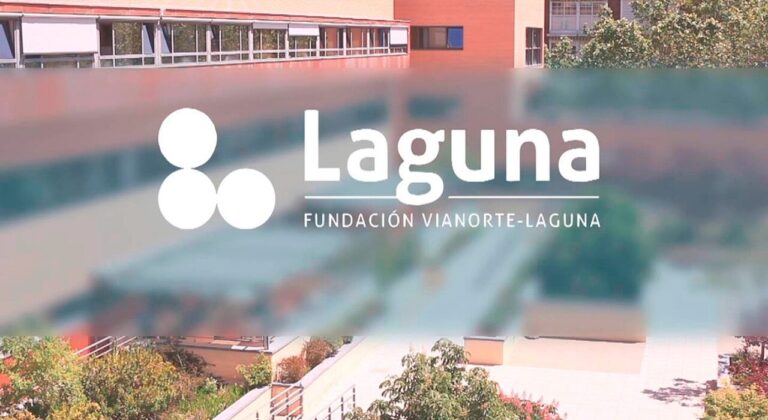Better knowledge of the genetic variations that make people more predisposed to cancer and the genetic changes that cancer cells undergo, immunotherapy, and oncolytic viruses are some of the most recent and promising advances in cancer treatment.
In his address to the nation in January 1971, President Richard Nixon declared the “war on cancer.” Years later, his wife Patricia was diagnosed with lung cancer and died in 1993. Two years after that, when Nixon himself died, we were still far from winning that war, which is still ongoing despite millions of hours of work and billions of dollars. Today we can say that, although we haven’t defeated cancer, we have won some important battles.
Today we know in considerable detail which genetic variations make certain individuals more prone to developing tumors than others; we know about the genetic damage that the tumor cells themselves carry within; we have improved conventional treatments with molecularly-focused therapies; we know that the immune system and other cellular processes can be magnificent allies in the fight against most cancers. In fact, many scientists consider that cancer is no longer synonymous with death and has become a chronic disease and, on many occasions, is curable.
Early diagnosis

Many studies in the field of genetics deal with relating the genetic variations of each person with their susceptibility to developing common diseases (and cancer can indeed be considered a common disease.) Some people have “good” genes (as far as cancer is concerned) and their initial risk of developing it is low, but if they are exposed for years to substances that promote the formation of tumors, such as tobacco, alcohol or radiation, their risk increases markedly. And the same thing is true vice versa as well.
But each of the genetic variations that predispose an individual to cancer (or protect them against it) modifies the risk in the slightest way, which is why it isn’t easy to pinpoint them. To do so, thousands of patients and healthy people have to be studied to compare their genomes and find the differences that are statistically associated with having developed the tumor.
In recent years, many studies have been conducted with the aim of discovering and characterizing these variations, and we can now use this information to identify those people with a higher-than-normal initial risk of developing a tumor and to monitor them more closely to detect any early stages of the disease. This is crucial, because the probability of completely eradicating a malignant tumor is significantly increased if the diagnosis is made when the cancer is still in its earlier stages.
The cancer genome
In any case, the main cause of cancer is precisely within the genome of the cancer cells themselves, because a tumor always begins when a cell suffers genetic damage and multiplies uncontrollably. The most common type of damage is from mutations (a change in the nucleotide sequence) in one of the genes that control cell behavior: the lack of coordination between processes such as cell growth, division or maturation.
Immunotherapy is probably the most powerful and promising weapon we have today to fight cancer
Furthermore, a tumor’s genome continues to mutate as it grows, and this makes it resistant to chemotherapy and sparks metastases. That’s why it is essential to know which genetic changes the cancer cells’ genomes go through, since they can give us clues about the mechanisms used by the cancer to progress and possible ways to attack it. Over the years, researchers have generated a very comprehensive atlas of the cancer genome, and it has enabled some important advances in diagnoses and the development of new drugs.
Immunotherapy, a promising future
Curing an aggressive cancer that has already metastasized is quite unusual. However, a study published in 2008 described precisely such a recovery in a 52-year-old patient who had melanoma, thanks to the patient’s own immune system. Our immune system is a highly sophisticated mechanism that fights everything that appears in our body as “foreign” and potentially harmful. For years, scientists have wondered why cancers are not eliminated by our natural immune system, because they often make abnormal proteins that the immune system has never “seen” and this should trigger an immune response against tumor cells. Unfortunately, tumors are capable of “hiding” from the immune system, so they must be unmasked in some way.
In the case of the patient with melanoma, scientists extracted a type of white blood cells called T lymphocytes from the patient’s blood. They are the cells responsible for destroying intruders that enter the body with “foreign” molecular labels. They were then placed in test tubes along with cells taken from the tumor to teach the patient’s lymphocytes how to recognize and destroy melanoma cells. They reinjected these “trained” lymphocytes into the same patient from which they had been initially extracted, and two years after treatment the lesions from the cancer had disappeared and the patient was symptom-free.
Although it’s a complicated strategy that doesn’t always work, it opened the door to exploring new ways to help the immune system fight cancer, with excellent results in recent years. In fact, immunotherapy is probably the most powerful and promising weapon we have today to fight cancer, and this was recognized by the Nobel Committee when it awarded Jim Allison and Tasuku Honjo the 2018 prize for Medicine for their pioneering work in this field. They discovered, respectively, two proteins called CTLA-4 and PD-1 that act as brakes on T lymphocytes, preventing them from attacking cancer cells, and showed that blocking these molecules triggers a powerful response to fight tumors. Drugs such as ipilimumab, nivolumab or pembrolizumab were developed based on these findings, and in the last decade immunotherapy has achieved never-before-seen success rates.
Oncolytic viruses in the fight against pediatric cancer
But tumors have natural selection mastered, precisely because of their incredible ability to mutate, which makes many treatments ineffective over time. This leads researchers to develop second or third generation drugs, but in many cases, what works best is to combine different types of treatments. For example, one study published last August by British oncologists highlights how they added a drug to immunotherapy that acts on the genomes of tumor cells through DNA demethylation. More than a third of the patients in the study, in whom immunotherapy had stopped working, responded to the combined treatment and tumor progression was slowed, which is very encouraging, especially since it was effective in several types of cancer.
Still, some tumors are so aggressive that they cannot be cured, as is the case in certain types of pediatric cancer. In these patients, researchers are exploring new attack strategies, such as the creation of oncolytic viruses, that is, viruses specifically designed to “break” tumors. In addition to destroying cancer cells, these viruses also enhance the attack of the immune system in cases where the cancer is more resistant to other treatments.
Recently, for example, the prestigious New England Journal of Medicine published research carried out by Spanish scientists that demonstrates the efficacy of treatment using oncolytic viruses against a tremendously aggressive pediatric brain cancer which patients survive less than a year after diagnosis with conventional radiation. Injecting the virus before radiation increased patients’ median life expectancy to 18 months, and in some cases longer. It may seem like a small advance, but extending life expectancy by 50% in the case of such an aggressive cancer that is resistant to any other treatment is really encouraging.
As you can see, we’re still far from being able to declare victory in the war against cancer. We’ve won important battles on many fronts, but complete patient recovery is still a long way off. Today we know a great deal more about the biology of cancer than we did just a few decades ago, and some of the advances have been spectacular. Perhaps this is all we can hope for. What is certain though is that we’ll continue to witness victories, both big and small, in our quest to eradicate the illness.
Javier Novo
Professor of Genetics
Translated from Spanish by Lucia K. Maher
